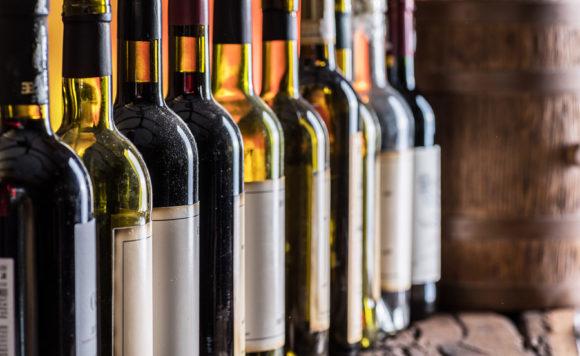National Wine Day is a thing. And it’s today.
Oenophiles probably know that May 25 is Wine Day, but the annual celebration of fermented grapes might be news to those who only like, but don’t necessarily love, all things wine.
Wine Day isn’t all alone. It has a sister holiday in February, National Drink Wine Day. Unlike Drink Wine Day, Wine Day is more about celebrating the beverage itself rather than drinking it, according to the Website Days of the Year. As the site notes, this shouldn’t prevent people from drinking wine to celebrate today.
Besides offering another good reason to imbibe, Wine Day also offers some interesting things to keep in mind for those with an interest in wine insurance.
Greg Burns, associate vice president of regional operations for Nationwide’s private client service, is in the business of insuring wine collections. Burns is celebrating Wine Day by passing along three basics insurance professionals should know about wine insurance: who buys it, what the coverage is, and why it’s needed beyond California.
Two Types of People
Two types of consumers will likely need to insure their wine: a wine hobbyist or collector with a large expensive collection, and a wine investor.
Both of these potential clients are the focus of the private client service at Nationwide, and both tend to be high-net worth individuals who don’t have an issue spending time and resources on finding exotic and very pricey wines.
“They’re finding specific types of wines you’re not going to find in a grocery store,” Burns said.
They have at least 15 to 20 cases of wine in their homes – at the low end – and are highly likely to have a wine cellar.
And they’re most often paying around $1,000 per bottle – also at the low end. “Typically, it would be higher than that,” Burns added.
According to the popular website Vivino, an average bottle of red wine (with an average 3.6 rating) costs $15.66 while a very good bottle of wine (4.0 rating) costs $32.48 on average. A 4.0-rated wine is considered better than 85 percent of the wines on the planet, according to the site.
Coverage
Homeowners insurance may cover a few bottles of 4.0-rated wine, but it probably isn’t covering the loss of someone’s serious wine collection.
“When you’re getting to some of the high-end wines, they’re probably not covering that like they should be,” Burns said. “Those things are not always covered in your homeowners base policy. If you dropped a bottle, it’s probably not going to be covered.”
Common issues that can affect precious wine assets
- Breakage – damage caused by dropping a bottle or during shipment from the vineyard
- Mechanical breakdown – spoilage of wine due to climate control system failure
- Backup of drain or sewer – wine collections are often stored in cellars and basements making them susceptible to damage due to drain or sewer failure
- Natural disasters such as floods, earthquakes and weather-related occurrences
- Diminished value due to cosmetic damage to the bottle or water damage to the label
Source: Nationwide private client service
A carrier like Nationwide usually offers a specialized collections policy. Under such a policy insureds can either obtain blanket coverage for say, a $1 million total limit, plus a sublimit per bottle, or they can schedule (itemize) based on the value of each bottle.
The latter option seems to be preferred by investors over hobbyists, according to Burns.
“What you find is someone that’s really an expert investor in this space, they have a catalogue of all the wine,” he said.
Premiums for these policies vary by rate filings, type of schedule of wine value and state the insured is located, he added.
Spoilage, which is not usually covered under a basic homeowners policy, is one of the biggest potential losses, Burns said.
“That’s a big item, because that’s where you would have your base exposure,” he said, adding that a power outage has the potential to take out an entire wine collection. “That’s where folks are exposed.”
To help steer clear of these occasions, Nationwide has some storage tips:
- Store wine in a cellar or electric wine cooler – The best place is in a cellar or electric wine cooler with fiberglass insulation to regulate temperature and protect against damage to the label.
- Climate control – Keep wine away from areas such as kitchens or laundry rooms that could generate temperature changes. The ideal temperature range for wine storage is between 45 to 65 degrees Fahrenheit. Avoid arid environments that can dry out corks. Areas with 50 to 80 percent humidity are adequate for storage.
- Store bottles on their side to prevent the cork from drying out.
- Keep stored bottles away from light. Sunlight can damage wine by aging it prematurely and household light bulbs can fade labels.
Not Just California
California is a vintage spot for wine insurance largely thanks to the grape growing fame of the Northern region, which also tends to be an attractive residence for investors and hobbyists.
However, those interested in selling wine insurance should keep in mind that it is needed all over the U.S.
“The wine business is becoming extremely big,” Burns said. “You can go to Washington; you can go to Oregon; there’s a massive expansion of the winery business. I think it’s throughout the U.S.”
The U.S. winery count for April rose to 9,708, which is up 6 percent over April 2017, according to the website Wines & Vines.
Nearly half of those wineries are in California (4,391 wineries), with Oregon (774), Washington (772) and New York (395) following. Both Oregon and Washington saw winery counts jump 8 percent year-over-year, while Texas (319), Virginia (276) and Pennsylvania (261) all experienced a 3 percent rise from a year earlier, according to Wines & Vines.
Another thing to keep in mind is that big wine investors and hobbyists don’t necessarily live near where the grapes are being grown.
“It’s not always where the wine is being produced,” Burns said.
California does rest near the top of the list of places that produce the most expensive wines.
Finances Online compiled a list of the world’s top 10 most expensive vintage red wines in 2018. At the bottom of the list working their way up are French wines Domanie Leroy Richebourg Grand Cru 1949 at $5,921 per bottle, Domaine Leroy Chambertin Grand Cru 1990 at $7,447 per bottle, and Domaine Georges & Christophe Roumier Musigny Grand Cru 1990 at $11,720 per bottle.
Screaming Eagle Cabernet 1992, a six-liter bottle from California’s Napa Valley, is valued at $500,000.
Topics California Washington Oregon
Was this article valuable?
Here are more articles you may enjoy.



 New York Governor Hochul Vows to Tackle Insurance Affordability, Litigation and Fraud
New York Governor Hochul Vows to Tackle Insurance Affordability, Litigation and Fraud  New York State Police Report 37-Vehicle Pileup on I-81 Near Syracuse
New York State Police Report 37-Vehicle Pileup on I-81 Near Syracuse  Business Moves: ALKEME Expands in US With Addition of 5 Agencies
Business Moves: ALKEME Expands in US With Addition of 5 Agencies  AIG Announces Strategic Investment Partnership of Up to $3.5B With CVC
AIG Announces Strategic Investment Partnership of Up to $3.5B With CVC 

